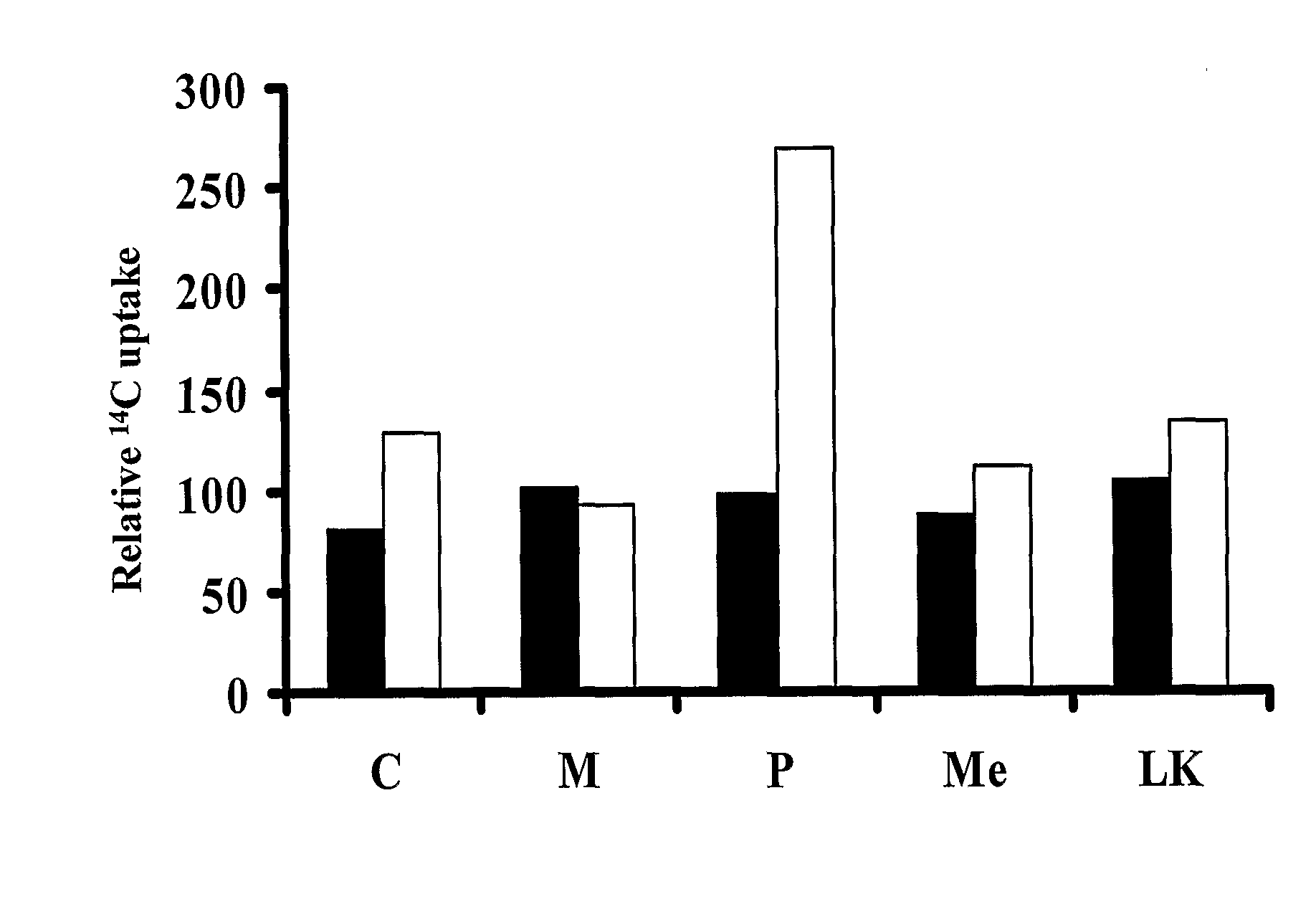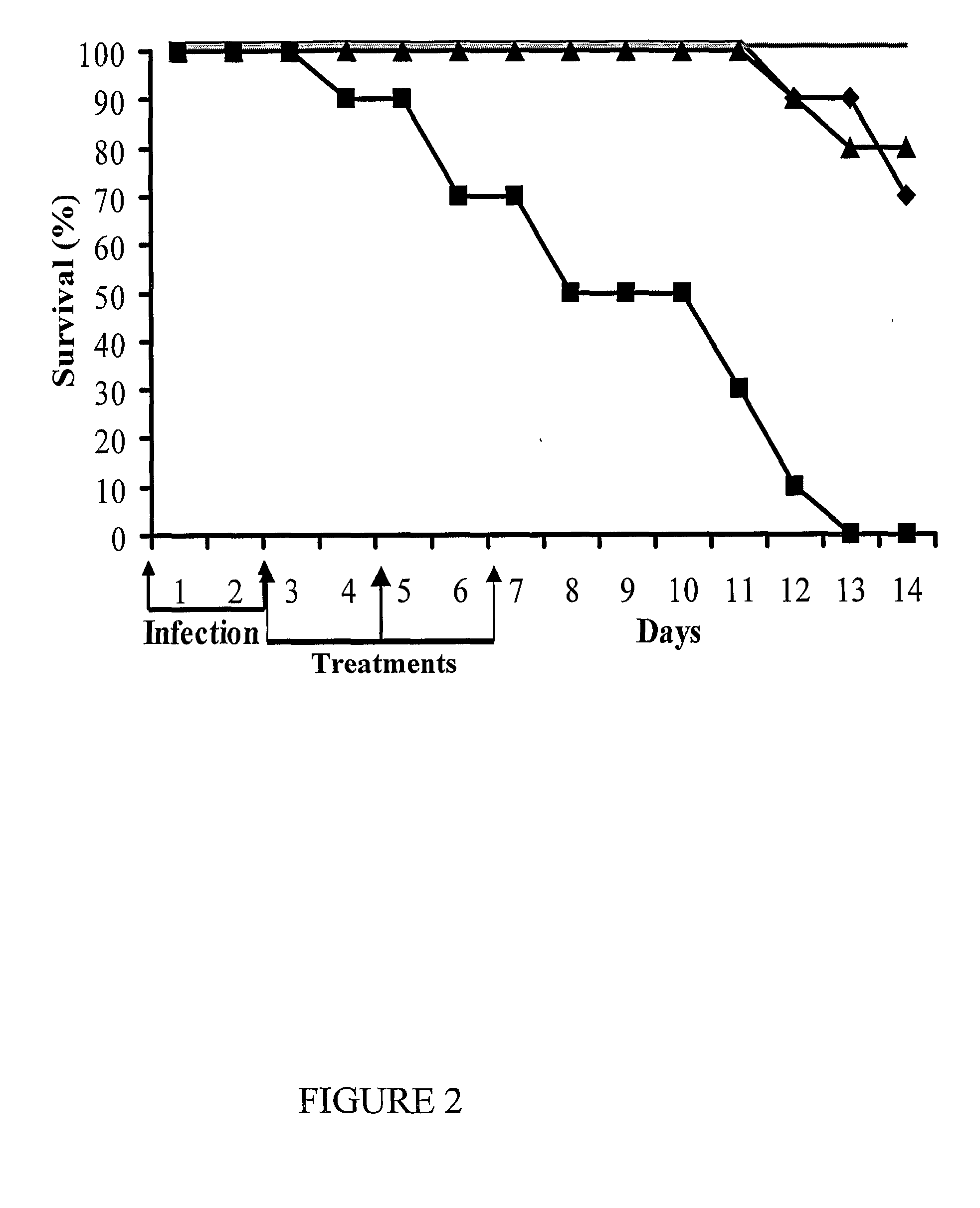Use of stilbene derivatives for treatment and prevention of aquatic mold infections
a technology of stilbene and derivatives, which is applied in the field of compositions of stilbene derivatives to achieve the effect of preventing and treating oomycete infections
- Summary
- Abstract
- Description
- Claims
- Application Information
AI Technical Summary
Benefits of technology
Problems solved by technology
Method used
Image
Examples
example 1
Susceptibility Testing of Saprolegnia parasitica
[0084]The in vitro susceptibility of Saprolegnia parasitica T-1 and S. parasitica CBS 540.67 to various compounds was determined by the agar-dilution and broth macrodilution methods.
Material and Methods
[0085]Saprolegnia parasitica Isolates
[0086]Saprolegnia parasitica T-1 isolate was obtained from skin lesions on moribund tilapia exhibiting signs of saprolegniosis. For the purpose of isolation, a small part of the skin and scales covered with hyphae was dried, and cut with a sterile scalpel blade, then placed onto Glucose-Peptone-Penicillin-Streptomycin (GP-PS) plates containing 3 g / l glucose, 1 g / l peptone, trace micronutrients and 250 mg / l each Penicillin-G and Streptomycin Sulphate, and incubated at 18° C.
[0087]After incubation for 3-4 days, a block of agar from the edge of the fungal colony was cut off and placed in sterile Petri plates, containing double distilled water and sterile Clover seeds, in order to obtain new bacteria-fr...
example 2
[0099]Compounds evaluated in Example 1 were further evaluated for their toxic effects in tilapia fish.
Material and Methods
[0100]LC50 values were determined by static short-term tests as a measure of the relative acute lethal toxicity for tilapia (Standard methods for the evaluation of water and wastewater (1985) 16th ed. American Public Health Association, Washington, D.C. p. 689-819).
[0101]Hybrid tilapia (Oreochromis niloticus X Oreochromis aureus) having an average weight of 20 g, were kept in 100 liter polyethylene tanks at a density of 1 fish per 10 liters, at a constant temperature of 21° C. for three weeks before the initiation of the experiment by addition of a test compound to each tank. The toxicities of hydrogen peroxide, sodium percabonate and Blankophore® BA were also evaluated at temperatures of 18° C. and 15° C. For the latter experiments, fish were acclimated to the required temperature for three weeks prior to addition of the test compound ...
example 3
Toxicity Testing of Blankophor® BA in Various Fish Species
Materials and Methods
[0106]LC50 values for Blankophor® BA in various fish species were determined as in Example 2, except that fish were acclimated to 21° C. for three weeks, and then to 15° C. for another two weeks before the initiation of the experiment. Following acclimation to 15° C., Blankophor® BA (100, 200, 500, 1,000 or 2,000 mg / L) was added to the tanks, and mortality of fish was recorded up to 96 h. Water parameters (O2, NH4+, NO2−, pH and Cl−) were monitored throughout the experiment and were maintained within acceptable limits. The presented results are the mean of two separate experiments. The fish used were: hybrid tilapia (Oreochromis niloticus X O. aureus), average weight 20 g; grey mullet (Mugil cephalus), average weight 70 g; common carp (Cyprinus carpio), average weight 25 g; hybrid striped bass (Morone saxatilis X M. chrysops), average weight 25 g, and grass carp (Ctenopharyngodon idella), average weight 2...
PUM
| Property | Measurement | Unit |
|---|---|---|
| concentration | aaaaa | aaaaa |
| concentration | aaaaa | aaaaa |
| concentration | aaaaa | aaaaa |
Abstract
Description
Claims
Application Information
 Login to View More
Login to View More - R&D
- Intellectual Property
- Life Sciences
- Materials
- Tech Scout
- Unparalleled Data Quality
- Higher Quality Content
- 60% Fewer Hallucinations
Browse by: Latest US Patents, China's latest patents, Technical Efficacy Thesaurus, Application Domain, Technology Topic, Popular Technical Reports.
© 2025 PatSnap. All rights reserved.Legal|Privacy policy|Modern Slavery Act Transparency Statement|Sitemap|About US| Contact US: help@patsnap.com



